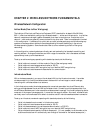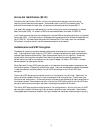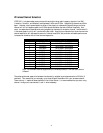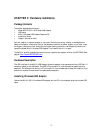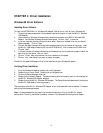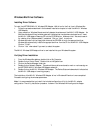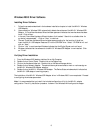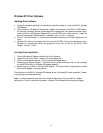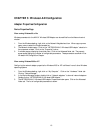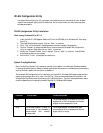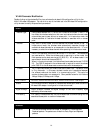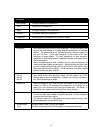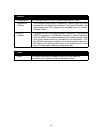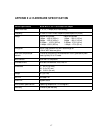
11
Device Properties Modification
Table 5-1. Device Properties Parameters
General Specifications Model MA101 Wireless USB Adapter
Network Type Configurable between 802.11 ad hoc and infrastructure modes. In
802.11 ad hoc mode, the wireless nodes form their own local network
where the end nodes communicate peer-to-peer without an access point.
In infrastructure mode, the wireless searches all available wireless
channels to associate with an access point. The default value for Network
Type is Infrastructure.
SSID Enter a 32-character (maximum) service set ID in this field. The
characters are case sensitive. When the wireless node is operating in ad
hoc mode, this field operates as the basic service set ID (BSS ID). All
wireless nodes in the same network should use the same BSS ID.
When in infrastructure mode, this field defines the extended service set
ID (ESS ID). The ESS ID assigned to the wireless node is required to
match the access point ESS ID for the wireless node to communicate
with the access point. The default SS ID is “Wireless”.
Channel Only valid in ad-hoc mode, this field defines the wireless channel to use.
In infrastructure mode, the wireless node automatically searches through
all available wireless channels for an access point to be associated with.
It is not necessary to select the wireless channel when operating in
infrastructure mode. The default wireless channel is 6.
Use WEP Set the data encryption level for the wireless node. The data encryption
level must be the same between all wireless nodes and access points in the
same network. The possible values for the data encryption level are
Disable, 64 bits and 128 bits. 64-bit data encryption is also called 40-bit
data encryption by some vendors. For more explanation on data
encryption, please refer to the wireless network fundamental chapter at
the beginning of this reference guide.
Setting the data encryption level to Disable is to not use any encryption;
this is also called Open System data encryption. Setting the data
encryption level to 64-bit configures the wireless node to use the 40-bit
(also called 64-bit) Shared Key data encryption method. 128-bit
encryption is another possible Shared Key data encryption method.
Preamble Mode A long transmit preamble allows the receiver to lock into the received bit
patterns more easily. A short transmit preamble provides better
performance. The default value is Long Tx Preamble.



